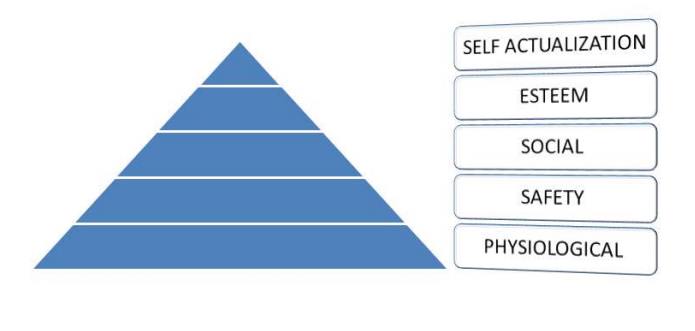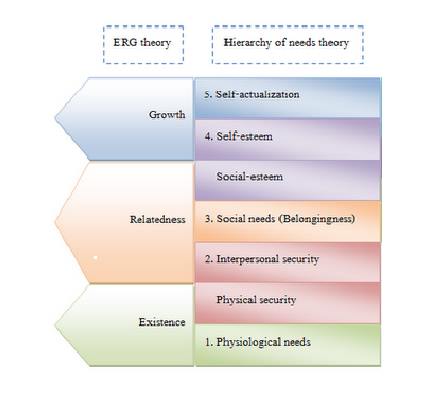Chapter: Principles of Management : Directing
Motivation Theories
MOTIVATION THEORIES
Some of the motivation theories are discussed
below
a) McGregor’s Theory X and Theory Y:
McGregor states that people inside the organization can be managed in
two ways. The first is basically negative, which falls under the category X and
the other is basically positive, which falls under the category Y. After
viewing the way in which the manager dealt with employees, McGregor concluded
that a manager’s view of the nature of human beings is based on a certain
grouping of assumptions and that he or she tends to mold his or her behavior
towards subordinates according to these assumptions.
Under the
assumptions of theory X :
Employees inherently do not like work and
whenever possible, will attempt to avoid it.
Because employees dislike work, they have to be
forced, coerced or threatened with punishment to achieve goals.
Employees avoid responsibilities and do not work
fill formal directions are issued.
Most workers place a greater importance on
security over all other factors and display little ambition.
In contrast
under the assumptions of theory Y :
Physical and mental effort at work is as natural
as rest or play.
People do exercise self-control and
self-direction and if they are committed to those goals.
Average human beings are willing to take
responsibility and exercise imagination, ingenuity and creativity in solving
the problems of the organization.
That the way the things are organized, the
average human being’s brainpower is only partly used.
On
analysis of the assumptions it can be detected that theory X assumes that
lower-order needs dominate individuals and theory Y assumes that higher-order
needs dominate individuals. An organization that is run on Theory X lines tends
to be authoritarian in nature, the word “authoritarian” suggests such ideas as
the “power to enforce obedience” and the “right to command.” In contrast Theory
Y organizations can be described as “participative”, where the aims of the
organization and of the individuals in it are integrated; individuals can
achieve their own goals best by directing their efforts towards the success of
the organization.
b) Abraham Maslow’s “Need Hierarchy Theory”:
One of the most widely mentioned theories of motivation is the hierarchy
of needs theory put forth by psychologist Abraham Maslow. Maslow saw human
needs in the form of a hierarchy, ascending from the lowest to the highest, and
he concluded that when one set of needs is satisfied, this kind of need ceases
to be a motivator.
As per his
theory these needs are:
(i) Physiological needs:
These are important
needs for sustaining the human life. Food, water, warmth, shelter, sleep,
medicine and education are the basic physiological needs which fall in the
primary list of need satisfaction. Maslow was of an opinion that until these
needs were satisfied to a degree to maintain life, no other motivating factors
can work.
(ii) Security or Safety needs:
These are
the needs to be free of physical danger and of the fear of losing a job,
property, food or shelter. It also includes protection against any emotional
harm.
(iii) Social needs:
Since
people are social beings, they need to belong and be accepted by others. People
try to satisfy their need for affection, acceptance and friendship.
(iv) Esteem needs:
According
to Maslow, once people begin to satisfy their need to belong, they tend to want
to be held in esteem both by themselves and by others. This kind of need
produces such satisfaction as power, prestige status and self-confidence. It
includes both internal esteem factors like self-respect, autonomy and
achievements and external esteem factors such as states, recognition and
attention.
(v) Need for self-actualization:
Maslow regards this as the highest need in his hierarchy. It is the
drive to become what one is capable of becoming; it includes growth, achieving
one’s potential and self-fulfillment. It is to maximize one’s potential and to
accomplish something.

All of the
needs are structured into a hierarchy and only once a lower level of need has
been fully met, would a worker be motivated by the opportunity of having the
next need up in the hierarchy satisfied. For example a person who is dying of
hunger will be motivated to achieve a basic wage in order to buy food before
worrying about having a secure job contract or the respect of others.
A business
should therefore offer different incentives to workers in order to help them
fulfill each need in turn and progress up the hierarchy. Managers should also
recognize that workers are not all motivated in the same way and do not all
move up the hierarchy at the same pace. They may therefore have to offer a
slightly different set of incentives from worker to worker.
c) Frederick Herzberg’s motivation-hygiene
theory:
Frederick has tried to modify Maslow’s need Hierarchy theory. His theory
is also known as two-factor theory or Hygiene theory. He stated that there are
certain satisfiers and dissatisfiers for employees at work. Intrinsic factors
are related to job satisfaction, while extrinsic factors are associated with
dissatisfaction. He devised his theory on the question: “What do people want
from their jobs?” He asked people to describe in detail, such situations when
they felt exceptionally good or exceptionally bad. From the responses that he
received, he concluded that opposite of satisfaction is not dissatisfaction.
Removing dissatisfying characteristics from a job does not necessarily make the
job satisfying. He states that presence of certain factors in the organization
is natural and the presence of the same does not lead to motivation. However,
their non-presence leads to de-motivation. In similar manner there are certain
factors, the absence of which causes no dissatisfaction, but their presence has
motivational impact.
Examples
of Hygiene factors are:
Security,
status, relationship with subordinates, personal life, salary, work conditions,
relationship with supervisor and company policy and administration.
Examples
of Motivational factors are:
Growth
prospectus job advancement, responsibility, challenges, recognition and
achievements.
d) Victor Vroom’s Expectancy theory:
The most widely accepted explanations of motivation have been propounded
by Victor Vroom. His theory is commonly known as expectancy theory. The theory
argues that the strength of a tendency to act in a specific way depends on the
strength of an expectation that the act will be followed by a given outcome and
on the attractiveness of that outcome to the individual to make this simple,
expectancy theory says that an employee can be motivated to perform better when
there is a belief that the better performance will lead to good performance
appraisal and that this shall result into realization of personal goal in form
of some reward. Therefore an employee is:
Motivation
= Valence x Expectancy. The theory focuses on three things:
Efforts
and performance relationship
Performance
and reward relationship
Rewards
and personal goal relationship
Clayton Alderfer’s ERG Theory:

Alderfer has tried to rebuild the hierarchy of needs of Maslow into
another model named ERG i.e. Existence – Relatedness – Growth. According to him
there are 3 groups of core needs as mentioned above. The existence group is
concerned mainly with providing basic material existence. The second group is
the individuals need to maintain interpersonal relationship with other members
in the group. The final group is the intrinsic desire to grow and develop
personally. The major conclusions of this theory are :
In an
individual, more than one need may be operative at the same time.
If a
higher need goes unsatisfied than the desire to satisfy a lower need
intensifies.
It also
contains the frustration-regression dimension.
McClelland’s Theory of Needs:
David McClelland has developed a theory on three
types of motivating needs :
Need for
Power
Need for
Affiliation
Need for
Achievement
Basically people for high need for power are inclined towards influence
and control. They like to be at the center and are good orators. They are
demanding in nature, forceful in manners and ambitious in life. They can be
motivated to perform if they are given key positions or power positions.
In the
second category are the people who are social in nature. They try to affiliate
themselves with individuals and groups. They are driven by love and faith. They
like to build a friendly environment around themselves. Social recognition and
affiliation with others provides them motivation.
People in
the third area are driven by the challenge of success and the fear of failure.
Their need for achievement is moderate and they set for themselves moderately
difficult tasks. They are analytical in nature and take calculated risks. Such
people are motivated to perform when they see at least some chances of success.
McClelland
observed that with the advancement in hierarchy the need for power and
achievement increased rather than Affiliation. He also observed that people who
were at the top, later ceased to be motivated by this drives.
g) Stacey Adams’ Equity Theory:
As per the equity theory of J. Stacey Adams, people are motivated by
their beliefs about the reward structure as being fair or unfair, relative to
the inputs. People have a tendency to use subjective judgment to balance the
outcomes and inputs in the relationship for comparisons between different
individuals. Accordingly:

If people
feel that they are not equally rewarded they either reduce the quantity or
quality of work or migrate to some other organization. However, if people
perceive that they are rewarded higher, they may be motivated to work harder.
h) Skinner’s Reinforcement Theory:
B.F. Skinner, who propounded the reinforcement theory, holds that by
designing the environment properly, individuals can be motivated. Instead of
considering internal factors like impressions, feelings, attitudes and other
cognitive behavior, individuals are directed by what happens in the environment
external to them. Skinner states that work environment should be made suitable
to the individuals and that punishment actually leads to frustration and
de-motivation. Hence, the only way to motivate is to keep on making positive
changes in the external environment of the organization.
Related Topics